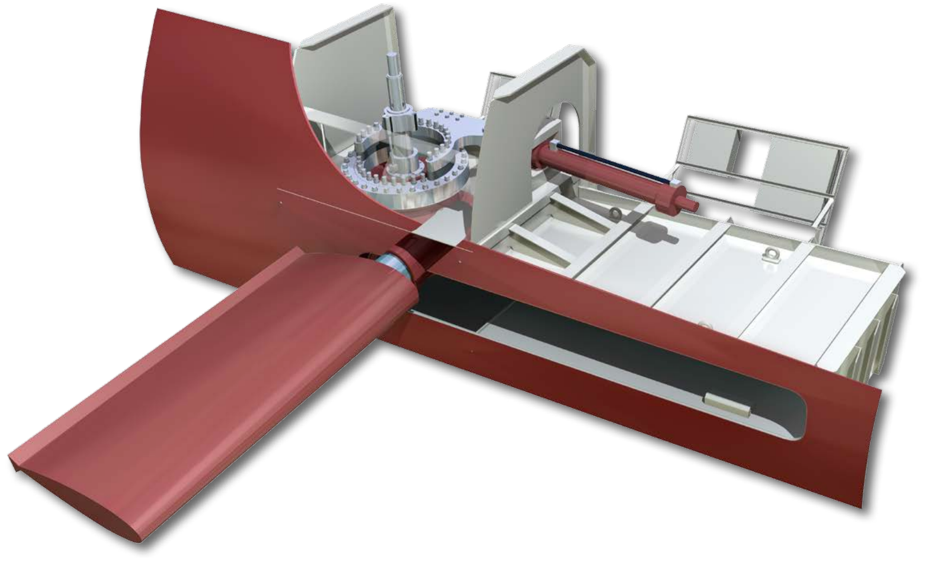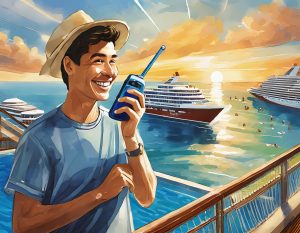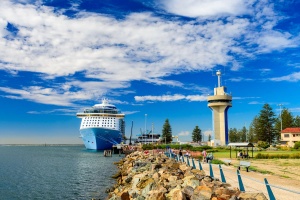One of the primary concerns for first-time cruisers is the fear of seasickness, a condition that can quickly overshadow the enjoyment of a voyage. Fortunately, modern cruise ships are equipped with advanced stabilisation technology designed to minimise the rocking and rolling motion of the vessel, significantly reducing the likelihood of passengers experiencing discomfort.
Seasickness occurs when there is a disconnect between what we see and the signals from our inner ear, which helps maintain balance. For those prone to motion sickness, this sensory mismatch can escalate into nausea and fatigue. By ensuring a smoother ride through the use of stabilisers, cruise ships dramatically decrease the chances of this sensory overload, making the journey more comfortable for all passengers.
Ship stabilisers, much like the flaps on an airplane’s wings, play a crucial role in maintaining stability. These fins extend underwater from both sides of the vessel and automatically adjust to counteract rolling motions caused by waves or wind. Modern stabilisers are retractable and equipped with computer-controlled systems, allowing them to operate efficiently only when needed. In addition to improving passenger comfort, these stabilisers enhance the ship’s forward motion and fuel efficiency by reducing drag, making them essential for both calm and rough sea conditions.

Three types of stabilisers
Traditional Stabilisers (Bilge Keels): Bilge keels are long strips of metal attached to the outer hull of the ship, positioned along the curve where the hull transitions into the vertical sides, just below the waterline. These passive stabilisers reduce rolling by providing physical resistance to turbulent water. While effective in calmer waters, bilge keels are less efficient in rough seas and are increasingly replaced by active stabilisation systems on modern cruise ships.
Fin Stabilisers: Fin stabilisers, commonly used on contemporary cruise ships, are larger, wing-like structures that extend from both sides of the vessel, usually midship. These fins are highly effective at counteracting rolling, as they can be actively adjusted to match sea conditions. Modern fin stabilisers are retractable, allowing them to fold into the hull when not in use, which improves manoeuvrability and reduces clearance issues during docking. They are controlled by advanced sensors and hydraulic systems, ensuring efficient operation in real-time.
Gyroscopic Stabilisers: Gyroscopic stabilisers, though more common on smaller vessels and yachts, have seen limited use on large cruise ships. These systems use a spinning gyroscope to generate stabilising forces, counteracting roll without relying on external fins. While highly effective at reducing motion, they are less scalable and not widely implemented on larger vessels, which tend to favour fin stabilisers for their proven performance and adaptability.
Technology and good seamanship
Modern cruise ships are equipped with advanced sensor systems that automatically adjust stabilisers in real time to counteract rolling. These systems are capable of eliminating up to 90% of the ship’s roll, providing passengers with a smoother and more comfortable ride. However, while stabilisers excel at reducing side-to-side motion, they do not address pitching (front-to-back movement). To mitigate this, contemporary ships are designed with bulbous bows and hydrodynamic hull shapes, allowing them to cut through waves more effectively, reducing pitching.
Rather than relying solely on stabilisers, captains utilise advanced navigation systems to chart courses that minimise discomfort. For instance, they may adjust the ship’s route to align wave patterns with the ship’s stabilisation capabilities, such as taking waves at an angle or from the side to allow the stabilisers to function optimally. Additionally, modern stabilisers now include zero-speed stabilisation technology, which can reduce rolling even when the ship is stationary, enhancing passenger comfort in rough seas or while at anchor.
For passengers concerned about seasickness, cabin location remains an important consideration. Cabins located lower in the ship and closer to the middle experience the least movement, while cabins situated higher or near the bow or stern are more susceptible to motion. However, with advances in stabilisation technology, the overall impact of cabin placement on passenger comfort has decreased on newer ships.
Featured image is from the Rolls-Royce retractable-fin stabilisers catalogue.




